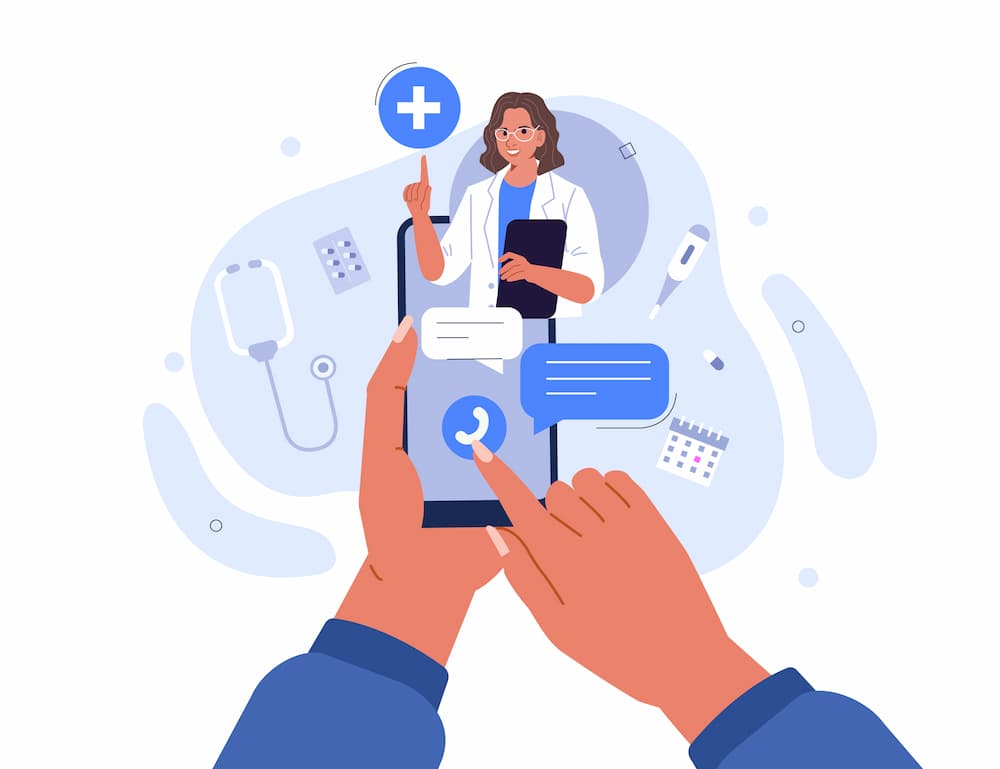Technology & Mental Health Treatment
Expanding the reach of care
Although not a panacea for the lack of mental health care, the use of technology can enhance and expand mental health care in areas where providers are scarce. Technology may assist clinicians in reaching difficult-to-reach populations due to geographical barriers or the stigma associated with seeking help. The fact that some types of technology, such as apps, are lower in cost than traditional care may also facilitate access. Plus, technology is convenient. As the National Institute of Mental Health points out, treatment can take place in any place and at any time, 24/7.

Why expanding the reach of care is important
According to the National Institute of Mental Health, nearly one in five adults in the U.S. experiences mental illness in any given year, and between 4-5% of U.S. adults have a serious mental illness. Approximately one in five youth in the U.S. have, or will have, a mental disorder at some point in their lifetime. In 2018, the National Council for Behavioral Health reported that nearly six in ten (56%) Americans were seeking or wanting to seek mental health services either for themselves or for a loved one.
With the onset of the COVID-19 pandemic, demand for mental health services has skyrocketed. According to a 2021 survey of psychologists conducted by the American Psychological Association (APA), demand for treatment for anxiety, depression, sleep-wake disorders, obsessive-compulsive and related disorders, and substance-related or addictive disorders have all increased.
The growing prevalence of mental health conditions combined with the lack of access to in-person care (which only increased with pandemic restrictions) and more sophisticated technology has stimulated interest in and use of technology as a tool to enhance and expand mental health care. As with any technology, there are also concerns about its use. Common concerns include the need to protect privacy, research that demonstrates that technology works as well as traditional methods, and an array of ethical issues. Despite this, the potential for technology to help improve mental health care is promising.
The Global Alliance recognizes that digital technologies and virtual settings are an integral part of 21st-century life. Read more about health communication AI and its potential to embrace an evidence-based, people-centered, and scalable approach to communicating about health.
What kinds of technology exist?
Mobile applications
There are currently over ten thousand mobile apps devoted to mental health, with many focused on mindfulness, anxiety, depression, and substance abuse. Mental health apps allow people who are hesitant to seek face-to-face services find help, often anonymously. Some allow doctors and mental health professionals to monitor progress and treatment adherence.
Although these apps have great potential, there is very little regulation of mental health apps or research on their effectiveness. However, they can often be a good first step for those who have avoided mental health care in the past.
Currently, apps exist for:
- Self-management: user adds information, so that the app can provide feedback (i.e., medication reminders).
- Thinking skills
- Skill-training: help users learn new coping or thinking skills; often set up like games.
- Illness management, supported care: allow users to get additional support by interacting with another human being.
Telehealth
Telehealth is technology that allows an individual to consult with a health care provider via phone or video chat. Telehealth can be beneficial for mental health treatment because it reduces costs of services and improves access to services for those who cannot see a mental health professional in person.
Telehealth has become increasingly popular in light of the COVID-19 pandemic. The previously-mentioned 2021 survey of psychologists done by APA found that, 96% of psychologists reported telehealth as an effective tool for treatment during the pandemic, and 93% reported that they plan to continue offering telehealth as a treatment option post-pandemic.
Virtual reality
Virtual reality is relatively new; however, it is rapidly becoming important in the field of mental health. As Digital Health Today reports, virtual reality headsets can “help desensitize patients suffering from post-traumatic stress disorder, by recreating their personal triggers. This helps them develop coping techniques.” This technology can also help patients suffering from depression, anxiety, and other disorders.
Internet-based support groups
Support groups, such as Togetherall, provide an option for individuals who prefer to remain anonymous in accessing mental health treatment or who cannot easily access treatment during ordinary working hours. In addition to anonymity and round-the-clock help, these sites often provide educational resources and may offer opportunities for members to connect with peers outside of their own geographical region. They are often popular for those with stigmatized or rare conditions where finding peers can be difficult.
Online support groups may serve as just one piece in an individual’s therapeutic journey, in addition to individual therapy or other treatment options.
Tips for individuals thinking about using technology
- Ask a trusted provider for a recommendation.
- Find information on the credentials and experience of the app developer(s).
- Turn to the literature to see if there are any empirical publications on the technology.
- Determine if the app is based on an empirically supported treatment, like Cognitive Behavioral Therapy.
Tips for providers thinking about using technology
- Remember that technology is still relatively new, so do your homework. What are the opportunities for using technology to supplement traditional care? What are the limitations?
- Think about how you’ll engage patients.
- Implement strict quality controls to ensure data privacy and security.
- Develop protocols for handling emergencies.
